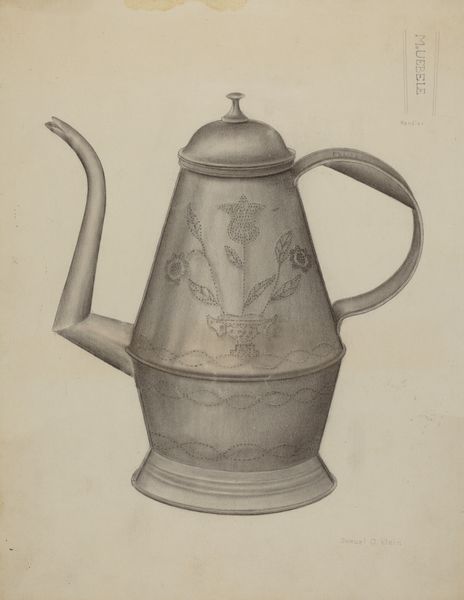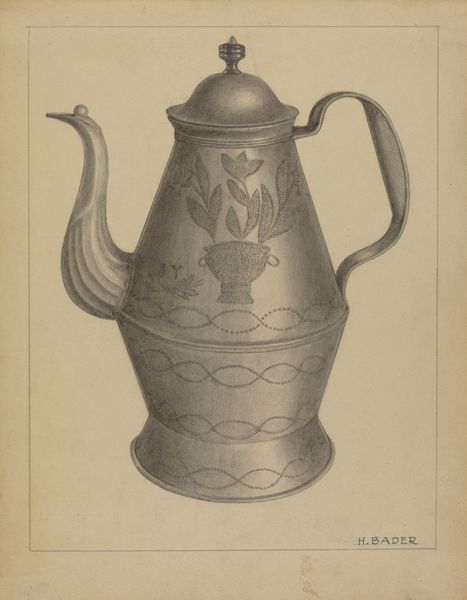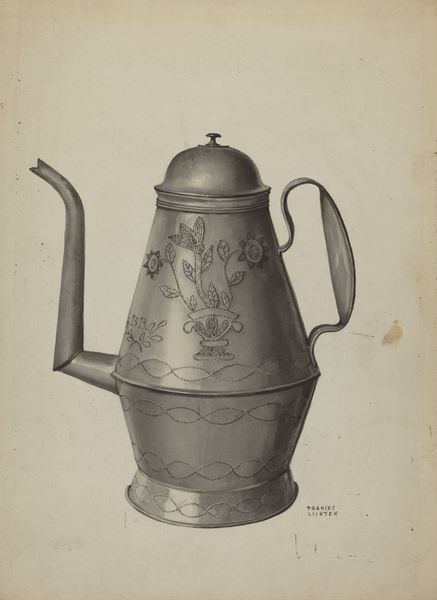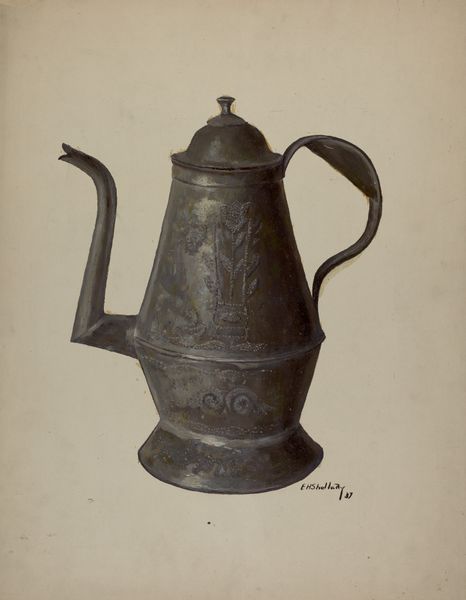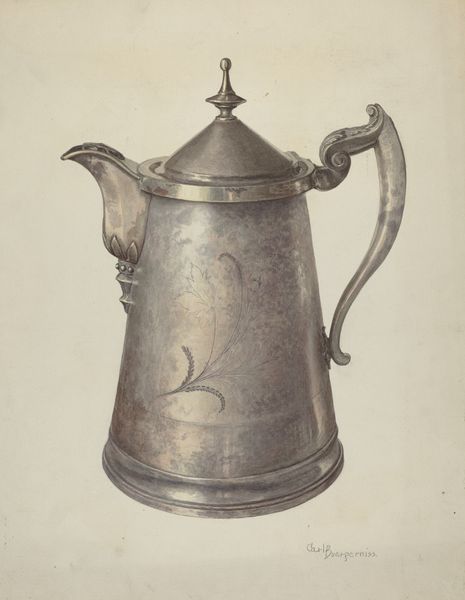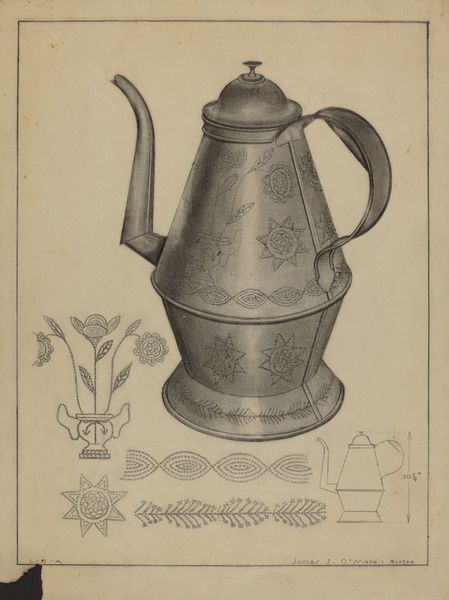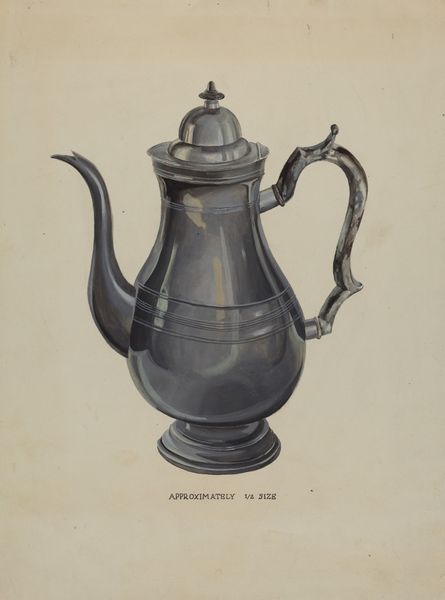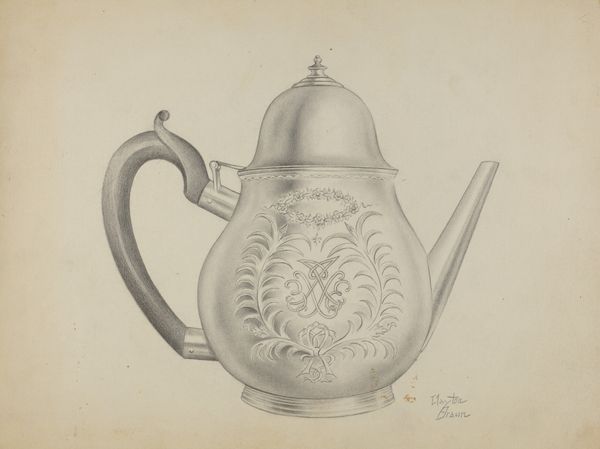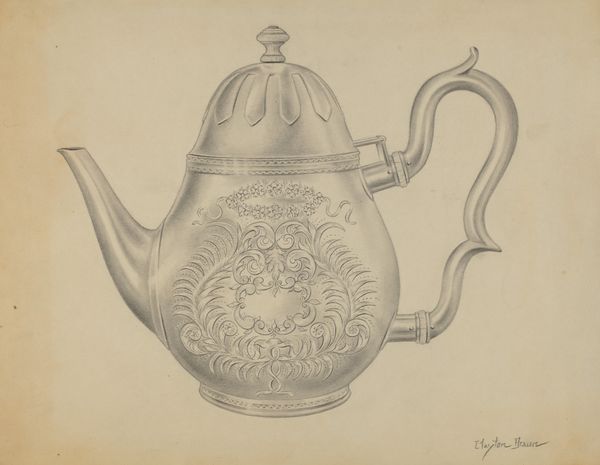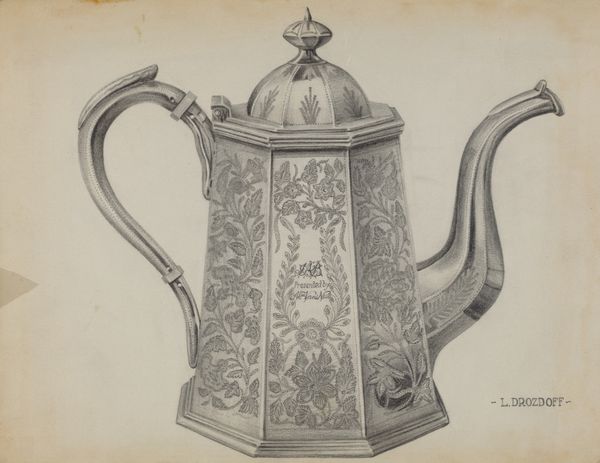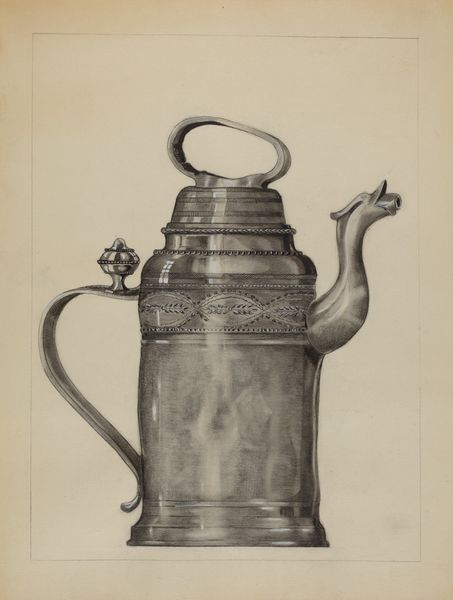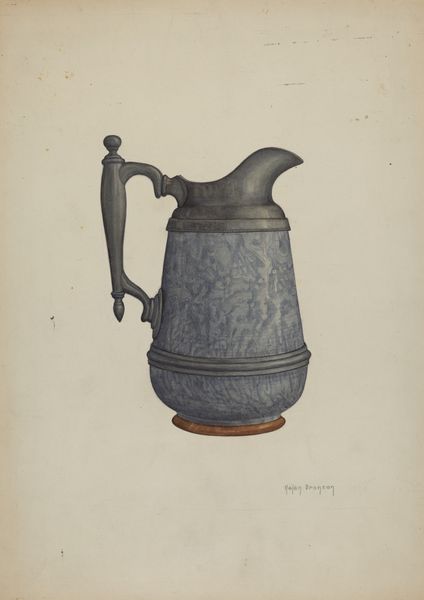
drawing, paper, pencil, graphite
#
drawing
#
paper
#
pencil drawing
#
pencil
#
graphite
#
graphite
Dimensions: overall: 38 x 32.6 cm (14 15/16 x 12 13/16 in.) Original IAD Object: 5 3/4" wide; 11 1/4" high
Copyright: National Gallery of Art: CC0 1.0
Editor: This is Frances Lichten's "Pa. German Coffee Pot," created around 1936 using pencil, graphite, and paper. The meticulous rendering of this everyday object is really captivating. What draws your attention when you look at it? Curator: What interests me immediately is the process. Lichten's choice of graphite on paper to depict a utilitarian object asks us to reconsider its value. Consider the labor involved, not only in crafting the original coffee pot – likely made of tin or another common metal – but also in meticulously reproducing it as a drawing. Editor: So, you're saying the drawing elevates the coffee pot? Curator: Not necessarily elevates, but recontextualizes it. The very act of drawing, of using "art" materials to represent a common household item, blurs the lines between high art and craft. It forces us to confront the material reality of daily life and the processes involved in making even the simplest objects. Editor: I see! How does the context of 1936 affect this? Curator: Well, think about the Depression-era. Material scarcity was a reality for many. Could Lichten be commenting on consumerism, on the value we place on manufactured goods versus artistic expression? The very existence of this detailed drawing challenges the disposable nature of mass-produced objects. Furthermore, how might this relate to gendered labour practices in both art and craft at that time? Editor: So, it's about challenging the usual assumptions about materials and production. That's fascinating! Thanks for that perspective! Curator: Indeed. Hopefully, thinking about these material aspects has enhanced your engagement with the drawing.
Comments
No comments
Be the first to comment and join the conversation on the ultimate creative platform.
